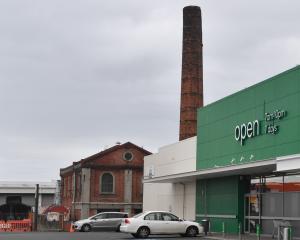While Dunedin is now rated a low earthquake risk zone, its number of older and historic buildings has meant some owners may have postponed or delayed upgrading or maintenance work since the Christchurch earthquakes and building code changes.
Building and Housing Minister Dr Nick Smith said yesterday the changes would reduce the number of buildings requiring assessment from an estimated 500,000 to 30,000, and bring down the total estimated cost from $1.36 billion to $777 million.
In April 2013, Dunedin had the third largest concentration of pre 1976 buildings, about 3900, behind Auckland's 19,050 and Christchurch's 5000.
Under the new post earthquake standards, buildings must reach a minimum 35% compliance in earthquake proofing. This has been driving some tenants to higher rated buildings, leaving owners to consider expensive strengthening projects.
Dunedin Mayor Dave Cull said the changes were ''positive'' for Dunedin. He said strengthening must still go ahead, but he was pleased Dr Smith had listened to the concerns of southern councils which had lobbied him ''intensively'' for two years for change.
''To his credit, he's listened to those concerns and yes, he will [now] adjust according to [earthquake] risk,'' Mr Cull said when contacted last night.
Mr Cull said the ''one size fits all'' edict had been detrimental to the lower South Island because of the large number of older buildings.
''Basically, it would have been uneconomic to fix [earthquake proof] them and a lot would have had to be demolished,'' Mr Cull said.
Dunedin in 2012 had about 160,000sq m of office space, of which ''at least 10%'' would be deemed earthquake prone, Colliers International found in a survey.
A year later, in mid 2013, the amount of A grade commercial property for lease around Dunedin had plunged from almost 12% to just 4% of available stock as businesses moved into better, earthquake proofed premises.
The Government has come under pressure to re examine its rules around earthquake strengthening after people who own older buildings faced huge bills and uncertainty, and groups using heritage buildings predicted they would need to be abandoned or pulled down.
The country will now be split into three zones according to the risk of a big earthquake, and the timeframes for assessment and strengthening varied accordingly.
Affected buildings in low risk areas, such as Dunedin, Auckland and Northland, will now need to be identified and assessed within 15 years and strengthened within 35 years.
''The return period for a significant earthquake (MM8) ranges from 120 years in Wellington to 720 years in Christchurch, to 1700 years in Dunedin, and only once every 7400 years in Auckland,'' Dr Smith said in a speech to the National Party's Mainland regional conference in Ashburton yesterday.
''We ... need to ensure the response is proportionate to the risk, that the costs are minimised and that we retain as much of our built heritage as possible,'' he said.
''The effect of these policy changes is that buildings like schools, universities and hospitals in high and medium seismic risk areas will have to be upgraded more quickly, but buildings in low risk areas like Auckland and Dunedin, more gradually.''
Additional reporting by The New Zealand Herald
New quake rules
Zoned
Low risk: Dunedin, Auckland, Northland.
Medium risk: Invercargill, Timaru, Nelson, Wanganui, New Plymouth, Rotorua, Hamilton, Tauranga.
High risk: Christchurch, Wellington, Blenheim, Palmerston North, Napier, Hastings, Gisborne.
What's changed
Previously: Dunedin buildings at risk had to be assessed within five years, with strengthening carried out within 15 years.
Changed: Buildings in low earthquake risk areas, such as Dunedin, now to be assessed within 15 years and strengthened within 35 years.
Unchanged: Building standards code; buildings must still reach the minimum 35% compliance in earthquake proofing.












